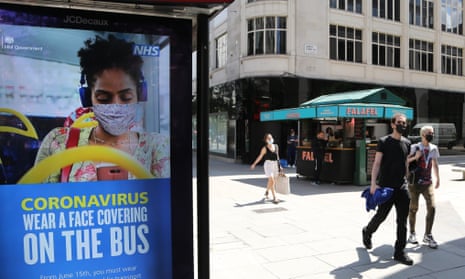Some scientists are warning there is growing evidence of airborne transmission of coronavirus. But how does it affect the actions we should take to stay safe?
What is airborne transmission?
According to the World Health Organization, airborne transmission involves tiny virus-containing droplets suspended in the air (aerosols) that linger for some time and are carried over distances greater than 1 metre on air currents.
These droplets, less than five microns in diameter, contain less virus than large respiratory droplets, but unlike the latter they don’t fall rapidly to the ground.
How big a role does airborne transmission play in the spread of Covid-19?
It is not clear. Some laboratory experiments have shown viable coronavirus can linger in aerosols for hours, but these are not “real-life conditions”.
And while the WHO has said it is not possible to rule out that cases among people in crowded, poorly ventilated indoor environments such as restaurants, choir practice and fitness classes, were caused by aerosol-related spread, it said the clusters could be explained by transmission via large droplets.
David Heymann, a professor of infectious disease epidemiology at the London School of Hygiene and Tropical Medicine and chair of the WHO’s strategic and technical advisory group on infectious hazards, said transmission of Covid-19 was known to be possible by exposure to large droplets. However, while the disease could be spread by aerosols, he said there was little sign they travel far – except potentially in the case of aerosol-generating medical procedures.
“There is limited evidence that aerosols generated by talking, coughing or sneezing can spread more than 1 metre, thus becoming airborne, and there is limited evidence that airborne transmission plays a role in the community spread of Covid-19,” he said.
But not everyone agrees. In an open letter to the WHO last week, 239 scientists raised concerns over aerosol transmission, including over greater distances.
“I don’t think you can explain some of the larger super-spreading events such as choir outbreaks other than by aerosols travelling greater than 1 metre,” said Donald Milton, a professor of environmental health at the University of Maryland, and co-author of the letter.
What would airborne transmission mean for face coverings?
Heymann said cloth face coverings were important to protect other people from a wearer infected with Covid-19, particularly when social distancing is difficult – a measure that would also be important if the disease spreads by airborne transmission.
“If [such coverings] catch the droplets, those droplets can’t get into an aerosol and they can’t get into an airborne mode,” he said.
To guard against infection of the wearer, N95 respirators are the best type of masks. As for infection through the eyes, experts warn face shields only protect against large droplets – but should be worn by people if up close to others for long periods, such as barbers.
What about other measures?
The authors of the open latter said hand washing and social distancing were important but also called for improvements in indoor ventilation, as well as the use of airborne infection controls such as air filters and UV lights.
Catherine Noakes, a professor of environmental engineering for buildings at the University of Leeds, who signed the open letter, said there was little evidence of transmission of Covid-19 by aerosols over long distances but aerosols could still pose a risk across a room.
Paul Hunter, a professor of medicine at the University of East Anglia, said evidence shows droplet spread was the most important factor to control. But if airborne transmission was significant, it could have important implications for indoor environments. “[If that is the case] we shouldn’t have any pubs open, we shouldn’t have any gyms open, even if people were wearing face masks,” he said.
Hunter added it could also mean social distancing of more than 2 metres, and widespread use of N95 masks in hospitals.
Should we be concerned about ventilation?
The risk of catching Covid-19 is, generally, lower outdoors than indoors. In enclosed settings, the US Centers for Disease Control and Prevention recommends keeping windows open or adjusting the air conditioning.
Linda Bauld, a professor of public health at the University of Edinburgh, said good ventilation was going to be even more important as more places reopen, and could mean getting used to open windows even in the winter.
Is air conditioning safe?
“Evidence on air conditioning to date is not strong, but some systems that simply recirculate indoor air are likely to be of limited benefit and may pose risks, ,” said Bauld.
A report from the European Centre for Disease Prevention and Control has concluded that heating, ventilation and air-conditioning systems (HVACs) filter out large droplets containing the coronavirus, although the air flow could blow the droplets over a larger distance than they would travel in a still setting.
The report also says such systems could spread Covid-19 aerosols if air is recirculated. But, it adds: “There is currently no evidence of human infection with Sars-CoV-2 caused by infectious aerosols distributed through the ventilation system ducts of HVACs.”
